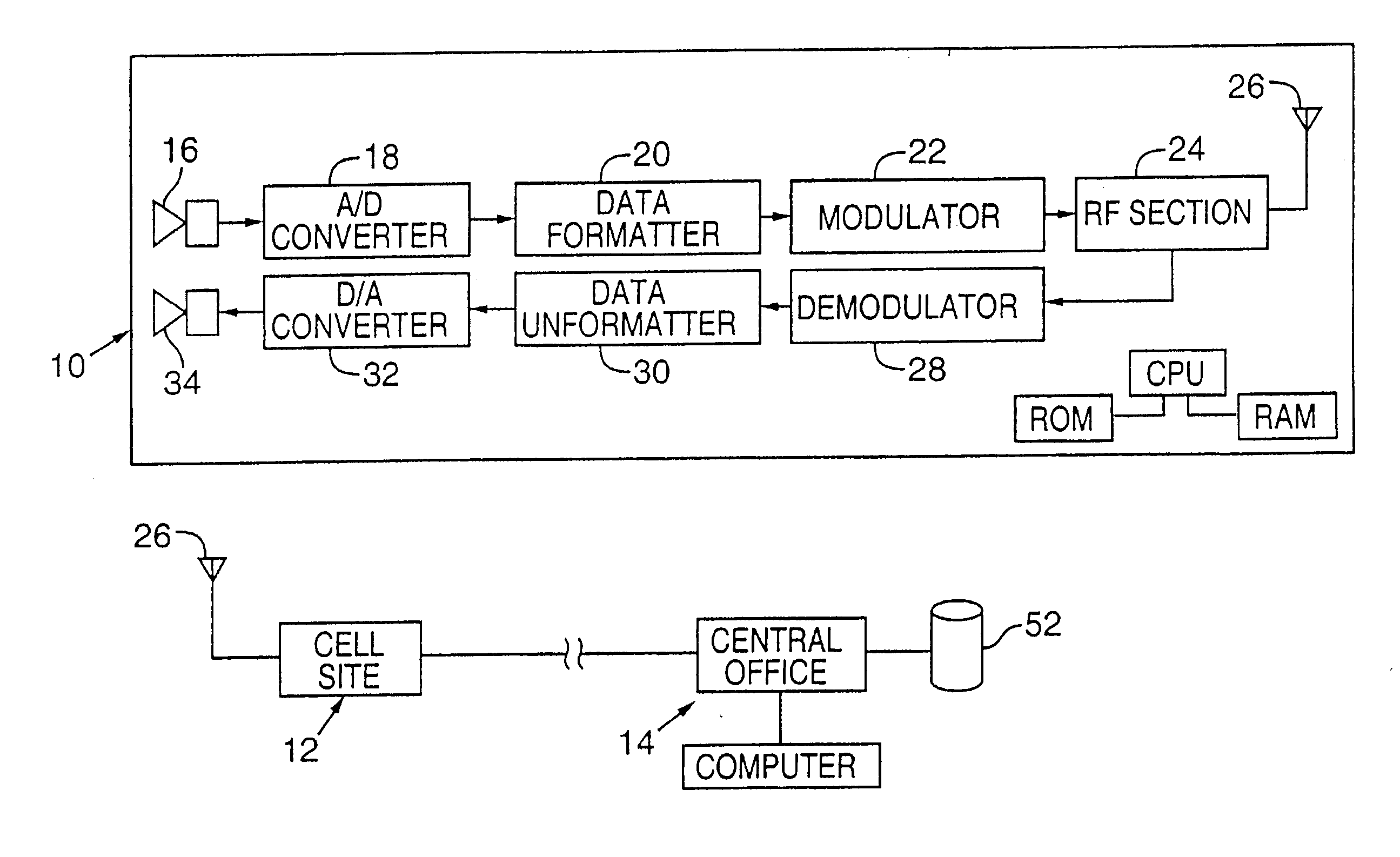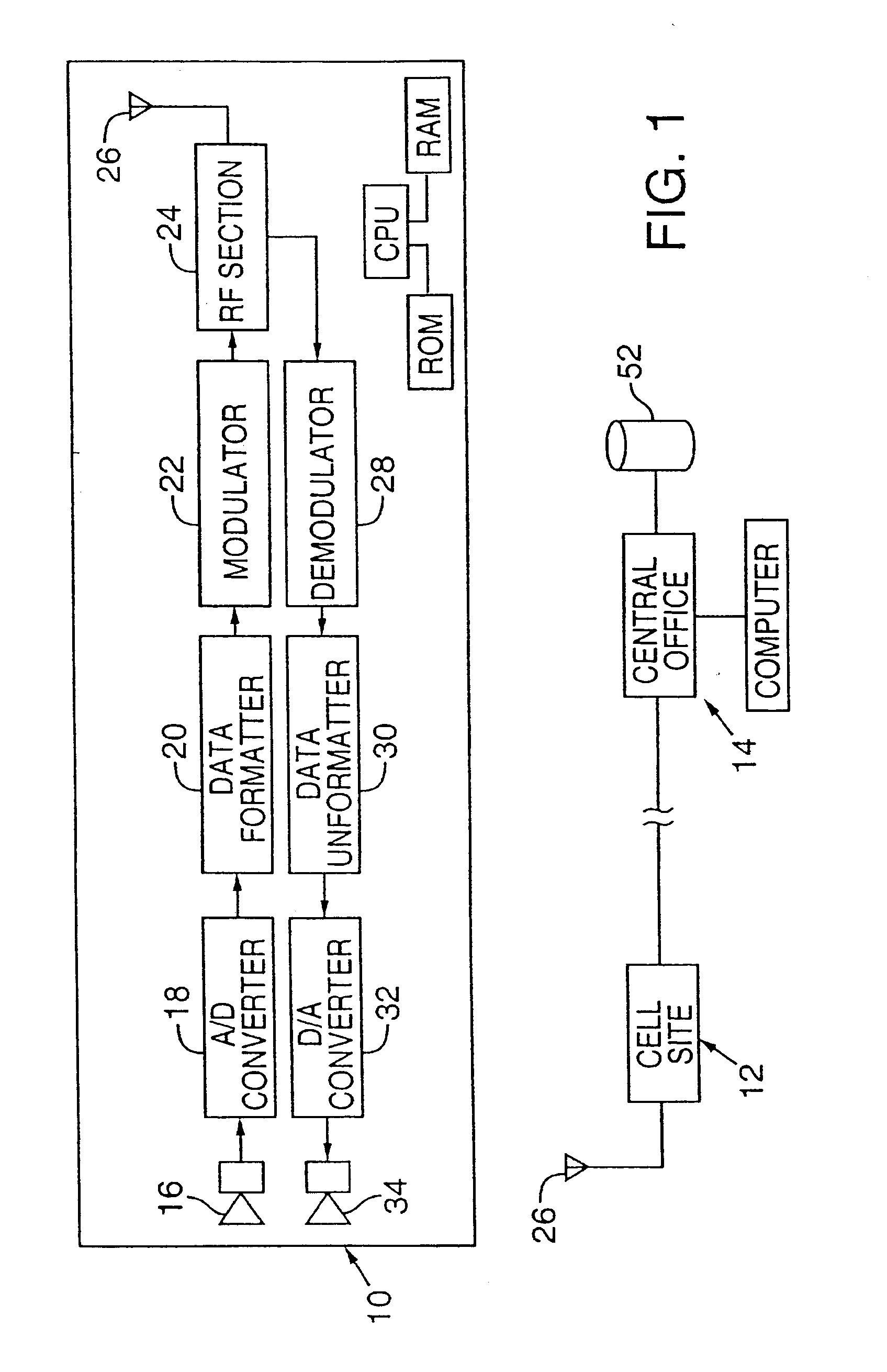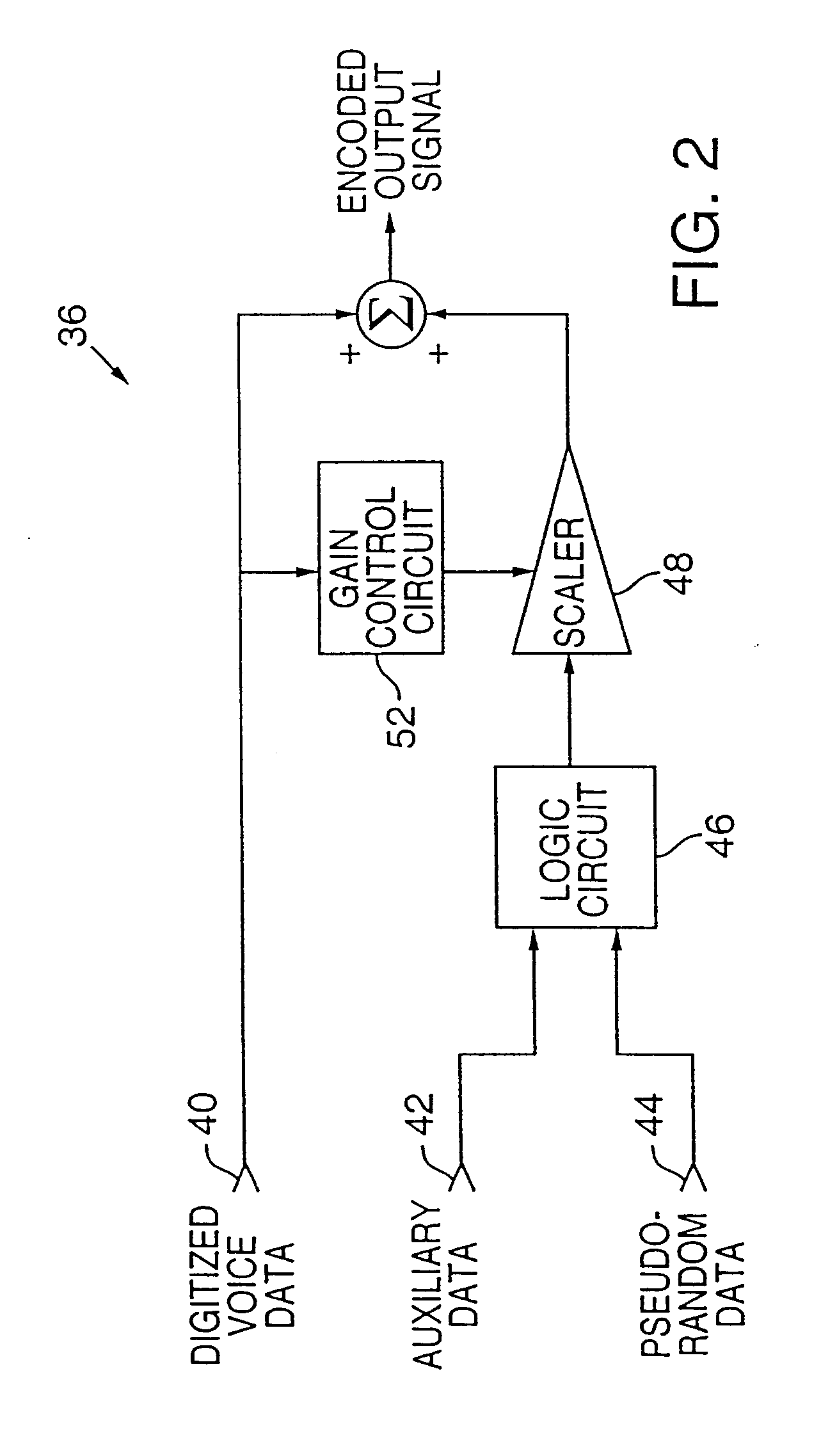Wireless Methods And Devices Employing Steganography
a technology of steganography and wires, applied in multiplex communication, recording signal processing, instruments, etc., can solve the problems of cellular telephone hackers, loss of services, and loss of services, and achieve the effect of enhancing the concealmen
- Summary
- Abstract
- Description
- Claims
- Application Information
AI Technical Summary
Benefits of technology
Problems solved by technology
Method used
Image
Examples
first embodiment
[0084] In a first embodiment, each telephone 10 is provided with a long noise key unique to the telephone. This key may be, e.g., a highly unique 10,000 bit string stored in ROM. (In most applications, keys substantially shorter than this may be used.)
[0085] The central office 14 has access to a secure disk 52 on which such key data for all authorized telephones are stored. (The disk may be remote from the office itself.)
[0086] Each time the telephone is used, fifty bits from this noise key are identified and used as the seed for a deterministic pseudo random number generator. The data generated by this PRN generator serve as the PRN data for that telephone call.
[0087] The fifty bit seed can be determined, e.g., by using a random number generator in the telephone to generate an offset address between 0 and 9,950 each time the telephone is used to place a call. The fifty bits in the noise key beginning at this offset address are used as the seed.
[0088] During call setup, this offs...
second embodiment
[0099] In this second embodiment, the PRN data used for encoding and decoding can be as simple or complex as desired. A simple system may use the same PRN data for each call. Such data may be generated, e.g., by a deterministic PRN generator seeded with fixed data unique to the telephone and known also by the central station (e.g. a telephone identifier), or a universal noise sequence can be used (i.e. the same noise sequence can be used for all telephones). Or the pseudo random data can be generated by a deterministic PRN generator seeded with data that changes from call to call (e.g. based on data transmitted during call set-up identifying, e.g., the destination telephone number, etc.). Some embodiments may seed the pseudo random number generator with data from a preceding call (since this data is necessarily known to the telephone and the carrier, but is likely not known to pirates).
[0100] Naturally, elements from the foregoing two approaches can be combined in various ways, and ...
PUM
 Login to View More
Login to View More Abstract
Description
Claims
Application Information
 Login to View More
Login to View More - R&D
- Intellectual Property
- Life Sciences
- Materials
- Tech Scout
- Unparalleled Data Quality
- Higher Quality Content
- 60% Fewer Hallucinations
Browse by: Latest US Patents, China's latest patents, Technical Efficacy Thesaurus, Application Domain, Technology Topic, Popular Technical Reports.
© 2025 PatSnap. All rights reserved.Legal|Privacy policy|Modern Slavery Act Transparency Statement|Sitemap|About US| Contact US: help@patsnap.com



